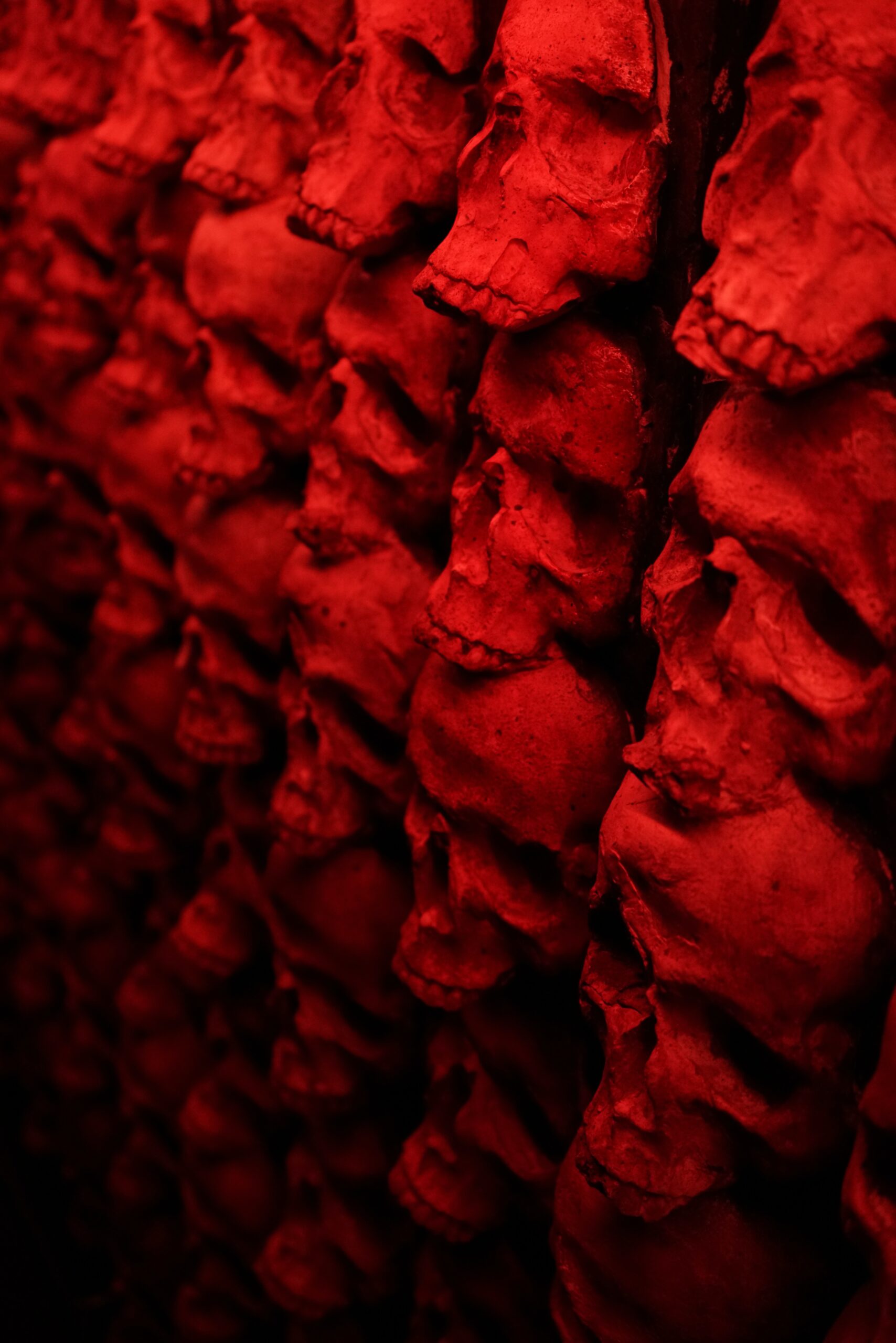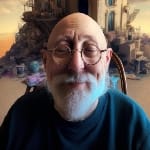BODY HORROR (UNCOMFORTABLE IN OUR OWN SKINS)

Image Used for Representation
Translation comes naturally to us. You’re doing it right now. No, I’m not talking about that wondrous act of reading, although that is indeed an act of translation. What I am actually referring to is the translation being carried out by your body, where each heartbeat and every breath is a transformative act.
Hearts and lungs are biological translators: they convert the elemental into the organic and make life comprehensible to the moribund. Respiration is the nexus of life, the point at which we take the atmosphere into ourselves and, with a lot of help from the circulatory system, give it back changed, altered for the larger, global structure of existence.
And therein lies the symphonic beauty of our personal translation experiences: the percussion and wind sections of our corporeal orchestra help us stay attuned to the idea that not only is each of us a living part of something bigger, but that “bigger something” is also inside of us. As Norwegian artist Edvard Munch once noted: “There are worlds within us,” with each drop of our blood being “a Universe” unto itself (e-flux.com).
But the day always comes when our hearts stop doing the two-step and our lungs cease their bellowing, when the universe that is each of us dies. But we don’t like to think about that. So generally, we don’t.
Instead, we take upon ourselves the aspect of Shiva and step into a dance of creation. We go deep into the making of the sacred space of self, of mind, of consciousness, of subjectivity.
Contemporary philosopher Noga Arikha has noted that — in the West, at least — much of our history has been shaped by the uncomfortable understanding that we are animals “locked into corruptible flesh” even as we are capable of imagining infinity. We can think ourselves “into abstract realms, away from our mortal, messy bodies” and cavort in the space between Eros and Thanatos. And yet … and yet, our awareness of biological finitudes always threatens to dim the sheen of wonder that rightfully accompanies contemplation of our capacities to “create mathematics, music, physics, and writing” … and ourselves (Arikha).
All of our marvelous acts of intellectual creativity can only temporarily “transcend” the awareness of ongoing biological decay, and so we cling with even greater intensity to thoughts about a universe untouched by the limitations of time and biology.
This wishful thinking has over millennia solidified into the privileging of thought over physicality, becoming foundational to the traditions of Western philosophy. Among the most influential of “modern” philosophers was Rene Descartes (1596–1650), who in his final published treatise advanced the idea of “dualism” that identifies the human capacity for thought (the conscious mind) as arising from a non-corporeal and undying “soul” that is somehow attached to the physical body. This philosophical concept of “dualism” sees the human body as merely the mechanical vehicle operated by the non-physical, eternal soul. Who we really are is not our bodies, but our minds/souls.
Descartes is perhaps more known outside the circles of Philosophy for his dictum “cogito, ergo sum,” most commonly translated as “I think, therefore I am.” What does it mean that this philosophical statement has over the three centuries since its first utterance been so generalized, misinterpreted, and misunderstood as to have become part of our collective cultural awareness? What indeed, except to see it as more evidence of our privileging of thought as a way of anesthetizing ourselves from the uncomfortable awareness of our bodies as always diminishing toward death?
The popular dramatic Arts give evidence of our drive to prioritize the mind over the body. Across the genres, from Comedy to Romance, we display the human experience primarily as psychological, with “life” being the sole territory of the mind. Classic dramas are stories of intellectual cleverness, narratives about protagonists who are largely identified by the qualities of their minds/souls. These fictive images of ourselves can be saintly or sinister, heroic or cowardly … and neither or both. A shortlist of iconic Shakespearean protagonists skimmed off the top of one’s head ought to be enough to convince all of us that “drama” arises from the interactions of characters who are defined by their psychological qualities of intellectual cunning and grand emotion: Iago and Edmund are driven by jealousies and perceived insults; King Lear unseats himself through pride; Lady Macbeth and King Claudius ride upon waves of ambition to the pinnacles of power only to fall beneath the crushing heaviness of fear.
Theatrical and literary drama is psychology moving through chronology. It is rare to see the body as that which pushes a protagonist toward conflict, although Comedy comes closest to acknowledging corporeal interruptions. Just consider Cyrano de Bergerac’s nose or Dr. Strangelove’s insolent arm, two of the most famous examples from Romance and Comedy that display the body as influential or interruptive of character and narrative development. In these genres a physical trait at best serves as a mere point of convenient convergence from which a brilliant mind can pivot into dramatic conflict, the way a comet slingshots around the sun. Even when the physical feature is central to the drama, it is often the case that the bodily traits are displayed as symbolic expressions of the psychological. Think about Shakespeare’s “rudely stamp’d” villain King Richard III, or Victor Hugo’s tragic Quasimodo whose gentle nature is disguised by a misshapen roughness of form.
Across the genres, the assumption that Life/Eros arises solely from “thought” is raised onto a platform and paraded through our narratives like a temple deity carried along the streets in a divine festival procession. Art is where the poet finds common ground with the priest and the philosopher insofar as they all share the desire to privilege the mind over the physical body, to situate beauty in the intellect while ignoring the base functioning of heartbeat and breath as definitive of what it means to “be alive.”
In the category of popular fiction, especially, it may be difficult to find a narrative that establishes the strengths and weaknesses of a protagonist’s physical body as the highest influence upon that character’s “arc” toward or away from “achievement.” It is almost inconceivable to think of a bestselling novel that paints a portrait of an interesting character who is not “a beautiful mind.”
Of course, the Horror Genre thumbs its nose at this rule of thumb.
Horror is the one narrative platform that refuses to let us disappear within a brain fog of fantasy that ignores bodily fragility or the possibility that our bodies can have any kind of influence in determining who or what we are. The Horror sensibility knows the desperation behind our whistling past the graveyard as we “think” ourselves into being and fool ourselves into formulating “me” as a solely psychic construct unrelated to our physical, biological forms. Horror as a narrative practice is a playful subversion that pokes most purposely at our “anxiety of organism” (Morgan 10).
This is not necessarily a bad thing. Indeed, perhaps we can argue that “Body Horror” may be potentially wholesome insofar as it can be just as much about reintegration as it is disintegration. It is a return to nature, a ritual exposure through Art to the acceptance of dark possibility and the accompanying recognition that survival is attainable, that there is light at the end of the tunnel. “Whether or not the relief occurs in the narrative itself,” says literary scholar Jack Morgan, engaging with Horror fiction involves a process in of disorientation and reorientation “in which the demarcation between things life-beneficial and things morbid is clarified and refreshed for us” (228). Through an interrogation of what makes us uncomfortable, we may re-awaken to an intensified recognition, understanding, and appreciation of life. And what connects with us more emotionally than storytelling? Fictional narratives can be astoundingly effective in translating the complex and harsh realities of human experience into intellectual and emotional. This act of translation has been central to the Horror Genre since its earliest acceptance as a “category” unto itself when “Gothic” was just a baby gargoyle in granite diapers.
Again, space limitations make this Wyrd Words installment yet another “introductory note” in our pondering of Body Horror. The third and final part of this discussion will take a deeper dive into the way the genre has traditionally called upon Body Horror to allow us a safe engagement with what Morgan calls the many “organic states of siege” that can plague both our individual bodies and our social bodies, and leave us questioning who we are and who, or what, is really in control of our destinies.
Citations
Arikha, Noga. “Body and Soul.” Lapham’s Quarterly, “Flesh” issue, vol. 9, no. 4, 2016. Online.
https://www.laphamsquarterly.org/flesh/body-and-soul.
E-flux.com. “Edvard Munch. Worlds within Us / The Experimental Self. Edvard Munch’s Photography.” Announcements. Kode Bergen Art Museum. 12 Jun. 2019. Online.
https://www.e-flux.com/announcements/271386/edvard-munch-worlds-within-usthe-experimental-self-edvard-munch-s-photography/#:~:text=The%20world’s%20largest%20Munch%20collections%20meet&text=The%20title%20’Worlds%20Within%20Us,form%20part%20of%20the%20large.
Morgan, Jack. Biology of Horror. Southern Illinois UP, 2002.
Also, read The Smell of Man, a book review by Oudarjya Pramanik published in The Antonym:
Follow The Antonym’s Facebook page and Instagram account for more content and exciting updates.


























0 Comments